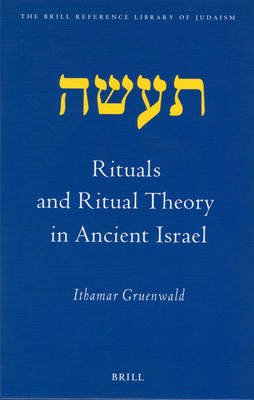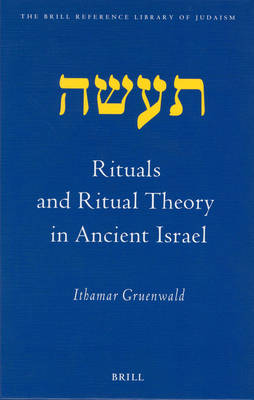
- Afhalen na 1 uur in een winkel met voorraad
- Gratis thuislevering in België vanaf € 30
- Ruim aanbod met 7 miljoen producten
- Afhalen na 1 uur in een winkel met voorraad
- Gratis thuislevering in België vanaf € 30
- Ruim aanbod met 7 miljoen producten
Zoeken
Omschrijving
This book, in many ways the first of its kind, addresses the issue of rituals and their embedded ritual theory, in the religion of ancient Israel. The leading idea of the book is that rituals are a autonomous form of expression of the human mind. The human mind expresses itself in rituals, as it does in language, the arts, and mathematics. Rituals are not performative translations of symbols and ideas, and in religion, of any kind of theology. Theology does not explain how rituals are done and how they accomplish what they claim to do.
The book begins with a general discussion of what rituals are, and argues that the ritual theory of each ritual is not in any general theory of ritual but embedded in the ritual act itself. Every ritual is structured in such a way that its details create the behavioural logic that makes ritual work. The difference is explored between the early and institutionalised phases of the religion of ancient Israel. Here the role of the economic ethos is the focus of the discussion. The book explores the links between myth and rituals, arguing that the connectedness with ritual endows a story with a myth essence. Detailed discussions of various rituals exemplify the major theoretical discourse.
The book is of interest to scholars in the areas of Halakhah (law and ritual), religious studies, and the anthropology of religion.
The book begins with a general discussion of what rituals are, and argues that the ritual theory of each ritual is not in any general theory of ritual but embedded in the ritual act itself. Every ritual is structured in such a way that its details create the behavioural logic that makes ritual work. The difference is explored between the early and institutionalised phases of the religion of ancient Israel. Here the role of the economic ethos is the focus of the discussion. The book explores the links between myth and rituals, arguing that the connectedness with ritual endows a story with a myth essence. Detailed discussions of various rituals exemplify the major theoretical discourse.
The book is of interest to scholars in the areas of Halakhah (law and ritual), religious studies, and the anthropology of religion.
Specificaties
Betrokkenen
- Auteur(s):
- Uitgeverij:
Inhoud
- Aantal bladzijden:
- 296
- Taal:
- Engels
- Reeks:
- Reeksnummer:
- nr. 10
Eigenschappen
- Productcode (EAN):
- 9789004126275
- Verschijningsdatum:
- 20/01/2003
- Uitvoering:
- Hardcover
- Formaat:
- Genaaid
- Afmetingen:
- 168 mm x 246 mm
- Gewicht:
- 662 g

Alleen bij Standaard Boekhandel
+ 540 punten op je klantenkaart van Standaard Boekhandel
Beoordelingen
We publiceren alleen reviews die voldoen aan de voorwaarden voor reviews. Bekijk onze voorwaarden voor reviews.








